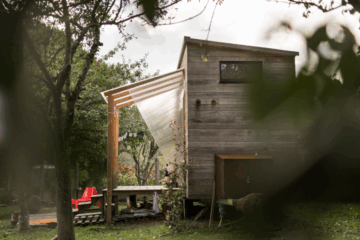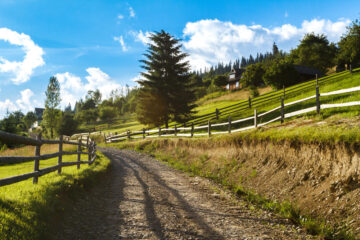“Doing it legally. So many rules. So many permits. It’s overwhelming.”
That’s not an exaggeration. It’s a direct quote from a frustrated off-grid builder on Reddit — and it sums up a quiet crisis unfolding across America.
Dreamers and doers alike are trying to break free from the grid. They want to build simple cabins, install rainwater catchment systems, or just live peacefully in a yurt on their land. But there’s one wall they keep hitting, over and over again:
Building codes and permitting laws make it nearly impossible to live differently.
When the Dream Collides with Bureaucracy
Imagine this: You’ve bought your slice of paradise. The land is yours. You’ve designed a modest home that treads lightly on the Earth. But the moment you step into your local permitting office, the reality hits hard.
Suddenly, your future off-grid haven is reduced to a pile of red tape. The local officials inform you that your planned structure doesn’t meet the minimum dwelling size. They tell you composting toilets aren’t permitted. You’ll need a septic system designed and installed by a licensed engineer if you ever want a certificate of occupancy. And don’t even think about collecting rainwater — not in this jurisdiction.
With every conversation, the road ahead grows darker. One off-grid builder on Reddit described the experience as a “permitting nightmare” so severe that they eventually gave up. After months of trying to comply, they abandoned the land they had poured their hopes into and began searching in a friendlier county.
It’s a heartbreaking, but increasingly common scenario.
Why Building Off-Grid Is So Complicated in the U.S.
The fundamental problem lies in the patchwork of regulations. There is no national standard for alternative living. Instead, rules shift dramatically between states, counties, cities, and sometimes even neighborhoods. You might find one county that’s wide open to innovation, and the next county over that treats any deviation from the norm as a code violation.

Many of the existing regulations were never written with off-grid living in mind. They were designed for tract housing developments, suburban streetscapes, and standardized infrastructure. As a result, structures that fall outside that framework — whether it’s a tiny home, a cob house, or a shipping container residence — often can’t legally exist within it.
One of the most common obstacles is the minimum square footage rule. In some places, homes must be at least 600 to 1,000 square feet to be legally habitable. This alone makes tiny homes or yurts essentially illegal. Then there are utility requirements: even if you want to live without grid electricity or water, you may still be forced to connect — not because you need it, but because local ordinances demand it.
Composting toilets and greywater systems, despite being eco-friendly and safe when used properly, are banned in many areas due to outdated sanitation codes. And if you thought harvesting rainwater was a no-brainer for sustainability, think again. States like Colorado have historically restricted it, viewing it as a threat to downstream water rights.
Zoning laws add yet another layer. Your land might be labeled agricultural, conservation, or rural residential — and each of these comes with specific restrictions. Some won’t allow full-time residence without a traditional dwelling. Others won’t issue permits unless you build to strict suburban-style standards. Even if you own the land outright, the government can tell you how you are allowed to exist on it.
Is There Any Hope?
Yes — but success hinges on where and how you build. In fact, location might be the single most important decision you make in this process. Smart off-grid builders have learned to start their journey not with a floor plan, but with a phone call.
Before committing to a piece of land, they call the local planning or zoning department and ask pointed questions: What’s the legal minimum dwelling size? Can you live full-time in a tiny home, RV, or yurt? Are composting toilets legal? Is rainwater harvesting allowed? What kind of system is required for waste? And are there any “owner-builder” exceptions that allow you to construct your home yourself?
Some counties — especially in more rural or economically depressed regions — are surprisingly flexible. Others, especially in high-growth or heavily regulated areas, are not. It’s not uncommon for someone to buy a beautiful plot of land only to realize they can’t legally build what they envisioned. This is why doing your homework ahead of time matters just as much as soil testing or solar exposure.
Once you’ve found a county with more reasonable codes, the next step is to think strategically about how you approach the build itself. Some off-grid homeowners begin with a permitted structure, such as a shed or workshop, and use that as a legal foothold. From there, they add improvements slowly and transparently, often working with inspectors rather than against them. This can ease the process and prevent sudden enforcement actions.
But codes aren’t the only thing to consider. Relationships matter too. A respectful, informed conversation with a planning official can go a long way. If you show that you understand basic safety and environmental health concerns, some departments will be more willing to work with you, especially if you bring in plans and documentation that show you’re serious about doing things right.
And don’t underestimate the power of community. In many cases, it’s neighbor complaints that spark crackdowns. Staying on good terms with nearby landowners — or better yet, getting their support — can protect your project and your peace of mind.
What If You Still Can’t Get Permits?
Some people build anyway. They go “stealth,” flying under the radar in remote areas, hoping that distance will shield them from inspection. And in some cases, it does. But this approach comes with risks — including fines, stop-work orders, and the possibility of being forced to tear everything down.
A smarter, more sustainable option is to seek out communities that are already aligned with your lifestyle. Whether it’s a co-owned piece of land, an intentional off-grid community, or a loose network of like-minded neighbors, there is power — and protection — in numbers.
Final Thoughts: Rewriting the Rulebook, One Cabin at a Time
If you’re feeling defeated by the system, know this: you’re not imagining the difficulty. The American permitting system wasn’t built for you. It was built for suburban conformity, not sustainability. But that doesn’t mean your dream has to die. It means you have to get creative. Be strategic. Be persistent.
There are people building beautiful, legal, off-grid homes across the country — but they’ve learned to work with the codes, or to find places where the codes are kind. They’ve chosen their battles wisely, picked their counties carefully, and earned the right to build differently.
You can too.
Just know this: it won’t always be easy, but you’re not alone — and every composting toilet approved, every rainwater system permitted, and every tiny home legalized is one more brick removed from the wall.






Very useful information for all dreamers like me. I am from MI and looking for an exit moment to start my off-grid life somewhere in the US.